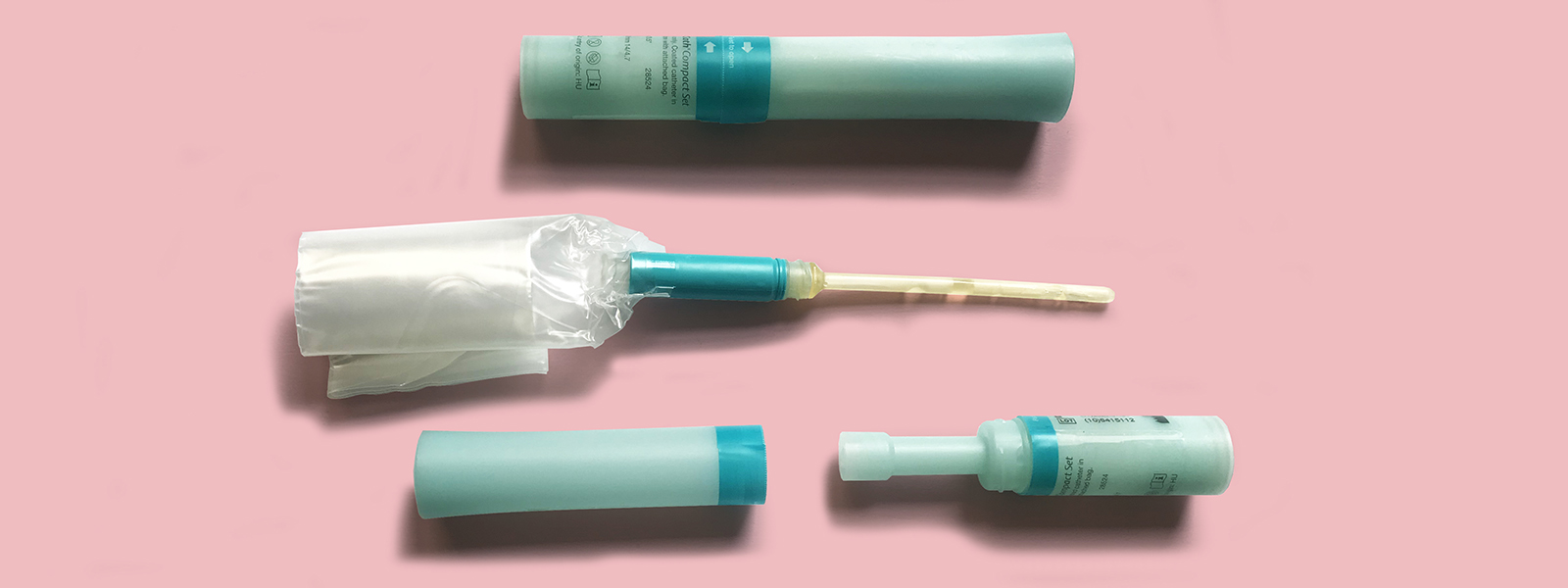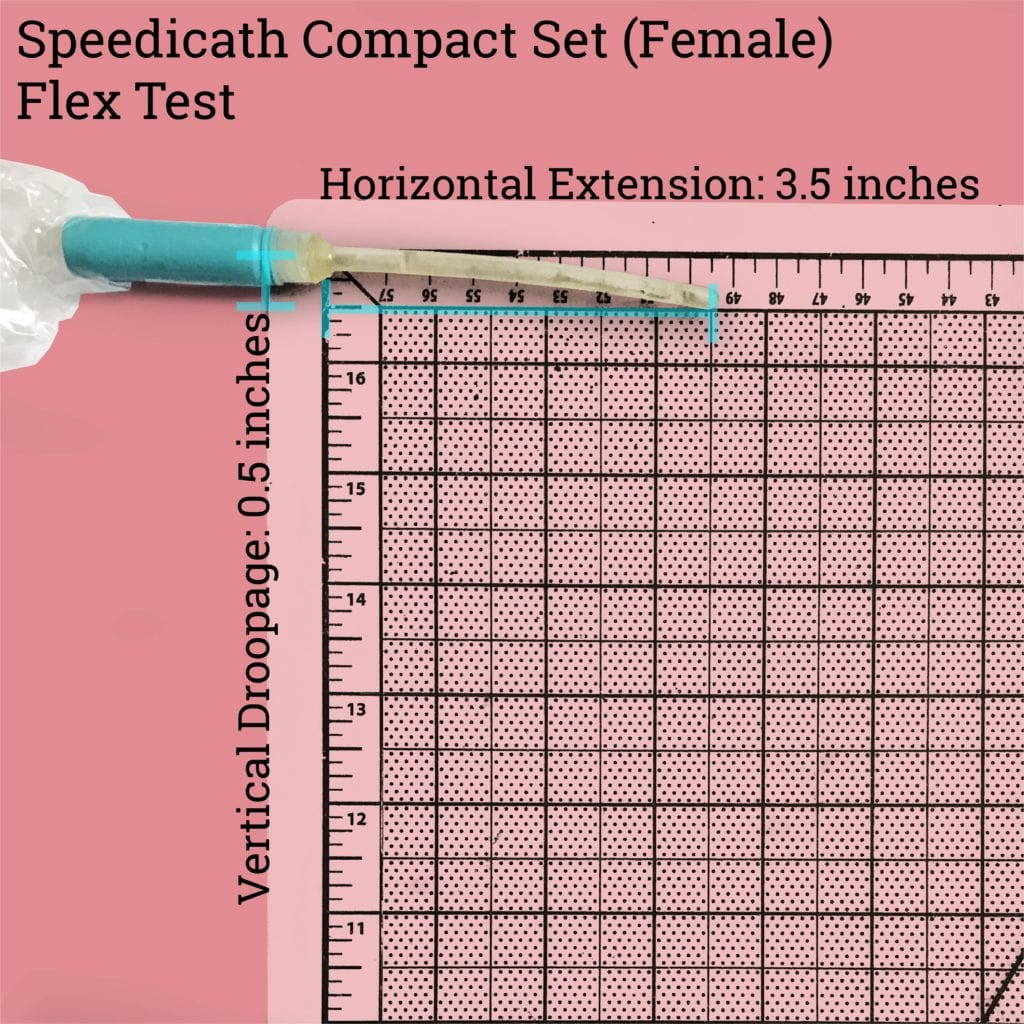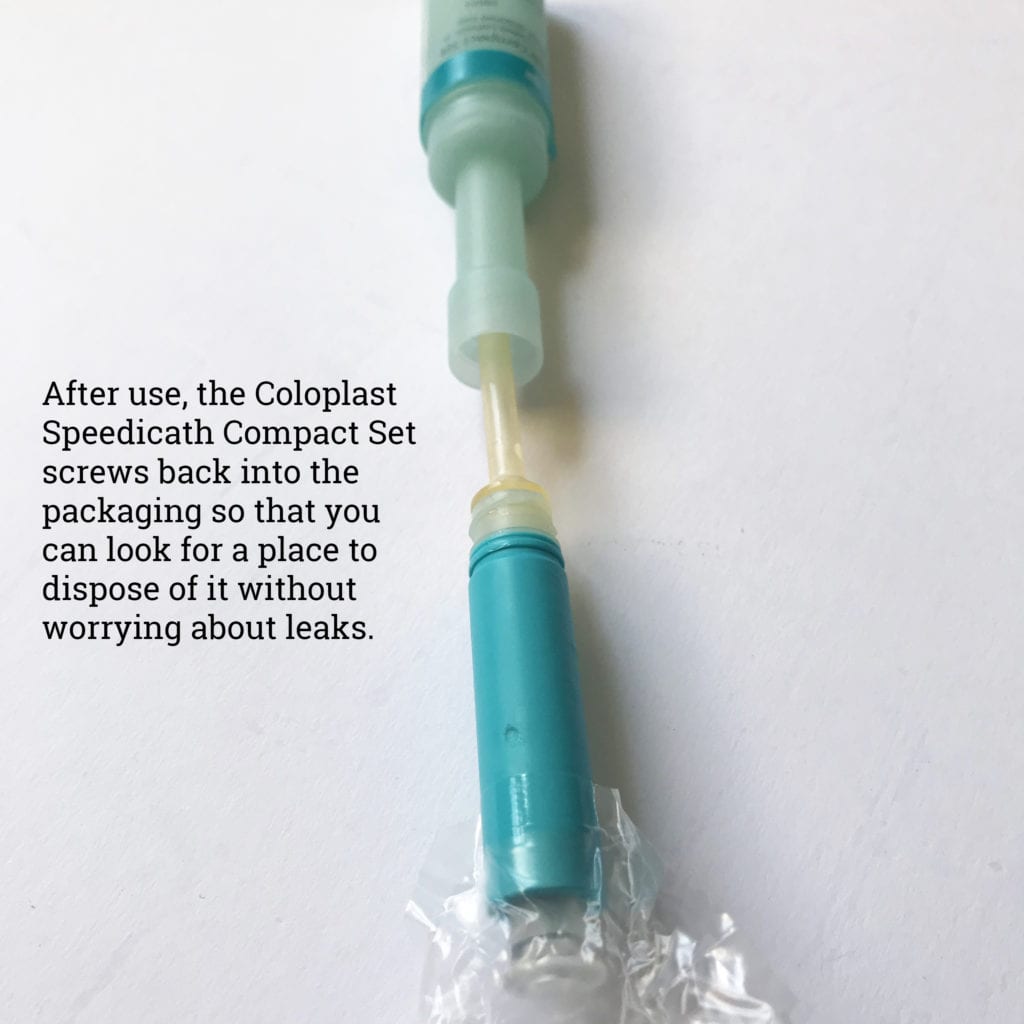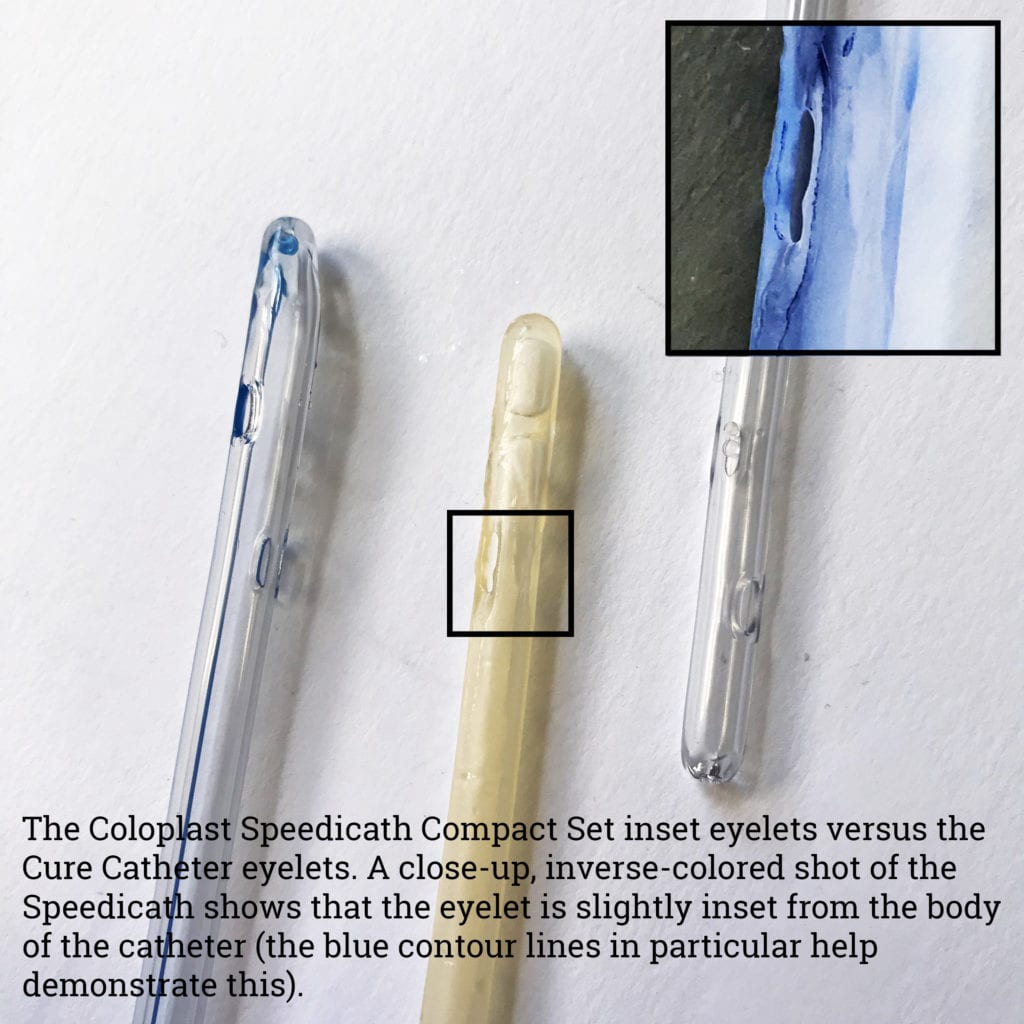Coloplast SpeediCath® Compact Set

Product Overview
Available Lengths: 3.5 inches (Female)
Available French Sizes: 10, 12, 14
Available Tips: Standard
Pros
Incredible packaging design that gives a boatload of functionality without a ton of footprint.
Convenience is what Coloplast was going for, and they definitely delivered.
Our Verdict
This is a premium product whose main emphasis is usability and convenience. It has its issues (plastic use, lack of infection control, short length, uneven lubrication coating), but this is one hell of a catheter to use. It’s like the Rolls Royce of catheters.
Cons
A shorter than usual catheter means that not everyone will be able to use this product.
The product packaging is completely inaccessible for individuals with limited dexterity.
This product uses a boatload of plastic and seems a bit excessive for everyday catheterization.
Though it provides much of the benefits of a closed system, it doesn’t have any features that help to prevent infection.
Material
The Speedicath® Compact Set is a ready-to-use catheter system (one that isn’t quite closed since it doesn’t shield the catheter from contamination) made out of polyurethane, which is typical for the Speedicath® line, but sets it apart from many other catheters. Polyurethane is non-toxic and is a more expensive plastic than PVC, which is cheap but can negatively impact human health. Polyurethane can actually soften slightly at body temperature, potentially making it easier to insert once it’s inside the body. Polyurethane has good biocompatibility, and isn’t known to cause allergic reactions. It has unique chemistry owing to the fact that it is a segmented polymer that gives it both flexibility and strength.
The catheter is coated with a hydrophilic coating made out of polyvinyl pyrrolidone (PVP). More on PVP below in the lubrication section!
Flexibility

This catheter is slightly more flexible than the SpeediCath Compact, drooping 0.5 inches while extending 3.5 horizontally. It’s still fairly rigid, which helps aid insertion. This means it’ll be easier to insert this catheter. One drawback to a stiffer catheter is the possibility that its use can lead to urethral trauma (the study in question focuses on indwelling catheters, but the logic should hold for intermittent catheters).
Packaging
This catheter’s packaging is truly stand-out and has been extremely well-designed for portability, convenience, and discretion. If you looked at this thing and didn’t know what it was, there’s very little chance that you’d think it was a catheter. Unfortunately, it is not a design that is accessible to individuals with limited dexterity.
The catheter comes packaged in a light teal, matte finish, 0.875 inch radius, 6 inch tall hard shell cylinder with a slight flaring on one end. To open the catheter, you grasp either end of the cylinder and twist. The flared end comes off, revealing a urine collection bag (750ml) attached to a soft rubber teal catheter funnel. A twist of the funnel frees the attached catheter, which emerges from an inner chamber lubricious and ready to be inserted. After you’re done using the catheter, you can twist the catheter back into the bottom half of the packaging so that it doesn’t leak while you’re finding a place to throw it out. The urine bag is also thoughtfully designed; it tears open to form a built-in spout so that you don’t spill urine when draining the catheter.
This catheter is really impressive from a packaging engineering perspective, and it’s plain to see how much thought went into its design and the needs of the folks who will use this catheter. As design and engineering nerds ourselves, we really appreciate every detail and the feeling that Coloplast thought of everything when it came to the design of this catheter. That being said, this seems like a catheter for a special occasion. We know – that sounds really stupid. But at the same time, it’s really hard to look at this product and think that it’s a responsible use of plastic to use 4 to 6 of these every day.

Lubrication
PVP is the hydrophilic coating that gives this catheter its lubricious quality. PVP is generally considered to be safe, but can cause allergic reactions in rare cases – so check with your physician if you’re unsure as to whether or not this catheter is right for you.
Uneven deposition of the hydrophilic coating on the surface of Speedicath catheters seems to be a bit of a trend. The surface of this Speedicath variant wasn’t quite as rough as the standard version or the Flex Coudé Pro, but we could feel distinct differences in different regions of the catheter.
Insertion
Video training materials for these catheters (and more!) made by Coloplast® can be accessed here.
The female version of this catheter is shorter than most – the flexible end of the catheter measures 3.5 inches. That’ll likely be enough for most people, but it’s important to know if you find that you end up inserting most traditional female catheters (which are usually 6 inches, with 5 inches of that being flexible) most of the way in to urinate.
This is a fairly stiff catheter, but doesn’t offer any protection from germs on the surface of the urethral opening. If you’re using this catheter and are worried about UTIs, remember to use antiseptic wipes to prepare the insertion area prior to catheterizing – and it couldn’t hurt to sterilize your hands either.

Like other Speedicath® catheters (but more so than the plain one), this catheter features slightly inset, narrow eyelets. This is thought to reduce the chances of delicate tissue being caught in the eyelet during insertion. They aren’t quite as polished as the Cure Catheter®, but they are a step above the rest of the competition.
Adverse Events
There were no product complaints for the Speedicath® Compact Set registered with the FDA in 2019.

The review of FDA Medical Device Reports from 2019 provides a limited snapshot of recent product performance in the marketplace.